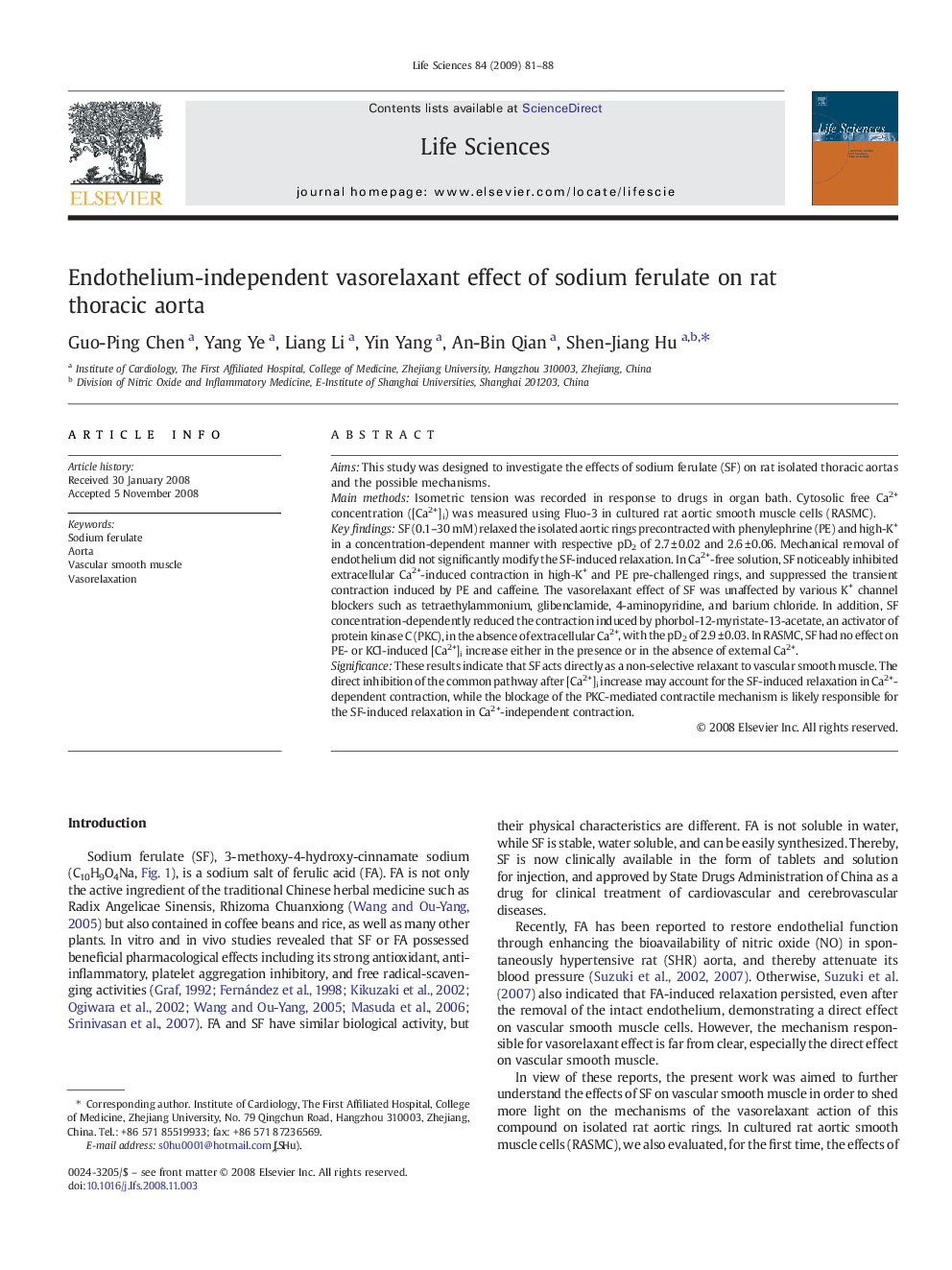| Article ID | Journal | Published Year | Pages | File Type |
|---|---|---|---|---|
| 2552649 | Life Sciences | 2009 | 8 Pages |
AimsThis study was designed to investigate the effects of sodium ferulate (SF) on rat isolated thoracic aortas and the possible mechanisms.Main methodsIsometric tension was recorded in response to drugs in organ bath. Cytosolic free Ca2+ concentration ([Ca2+]i) was measured using Fluo-3 in cultured rat aortic smooth muscle cells (RASMC).Key findingsSF (0.1–30 mM) relaxed the isolated aortic rings precontracted with phenylephrine (PE) and high-K+ in a concentration-dependent manner with respective pD2 of 2.7 ± 0.02 and 2.6 ± 0.06. Mechanical removal of endothelium did not significantly modify the SF-induced relaxation. In Ca2+-free solution, SF noticeably inhibited extracellular Ca2+-induced contraction in high-K+ and PE pre-challenged rings, and suppressed the transient contraction induced by PE and caffeine. The vasorelaxant effect of SF was unaffected by various K+ channel blockers such as tetraethylammonium, glibenclamide, 4-aminopyridine, and barium chloride. In addition, SF concentration-dependently reduced the contraction induced by phorbol-12-myristate-13-acetate, an activator of protein kinase C (PKC), in the absence of extracellular Ca2+, with the pD2 of 2.9 ± 0.03. In RASMC, SF had no effect on PE- or KCl-induced [Ca2+]i increase either in the presence or in the absence of external Ca2+.SignificanceThese results indicate that SF acts directly as a non-selective relaxant to vascular smooth muscle. The direct inhibition of the common pathway after [Ca2+]i increase may account for the SF-induced relaxation in Ca2+-dependent contraction, while the blockage of the PKC-mediated contractile mechanism is likely responsible for the SF-induced relaxation in Ca2+-independent contraction.
